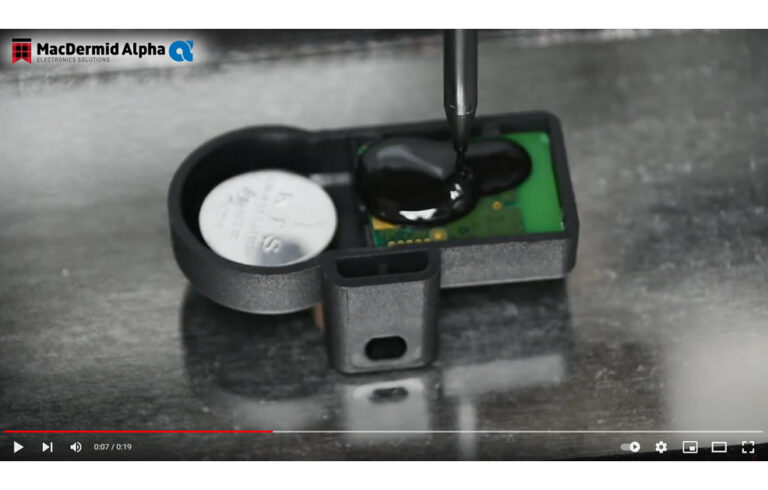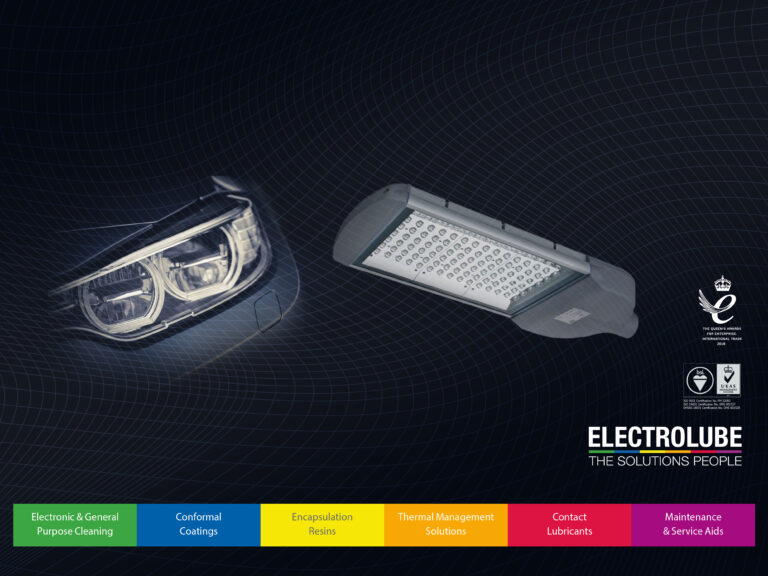Estimated Read time: 1250 words 5 mins
In my last blog piece I laid out some basic points to help ‘design out production problems’ – essentially how to spot those ‘wrinkles’ that might have an adverse effect on production, ironing them out before you even think about applying conformal coatings to your products.
In this post, I’m going to take a look at some issues you are sure to face – and which must be taken into consideration – when, finally, you apply those conformal coatings. Here are my five essential facts:

Fact 1 – Back to Basics
Conformal coatings provide the necessary combination of high performance and reliability within a huge array of electronic devices. They can be used in a broad range of environments to protect printed circuit boards from moisture, salt spray, chemicals and temperature extremes, serving to prevent corrosion, mould growth and electrical failures. The protection provided by conformal coatings also allows for higher power and closer track spacing, enabling designers to meet the demands of miniaturisation and reliability. They are available in solvent-based, water-based and 100% active materials, as well as vapour deposited coatings, in which monomeric gases are mixed together in a vacuum, where they are polymerized and deposited onto the surface of the PCB as a protective film.
The coatings are generally applied in liquid form (nearly everything that is applied in liquid form is converted into solid protective coating) and are subject to capillary forces and gravity during drying. They are unlikely to yield perfectly straight edges. Often coating drawing is presented as a rectangular box, and this is likely to cause issues during inspection. Better to specify areas that must be coated and areas that must not be coated. Anything else is a ‘don’t care’ area.
Fact 2 – Less is more
The old adage that if ‘some is good, more is better’ doesn’t necessarily hold true with conformal coating. Conformal coatings are designed to be applied at the thickness specified on the datasheet. Exceeding the recommended thickness is unlikely to provide better protection, but may introduce a range of production issues ranging from dramatically increased cycle time to solvent-entrapment, stress-shrinkage/de-lamination/cracking.
Therefore, in order to obtain the maximum levels of protection available from the particular chemistry, three key criteria must be fulfilled:
1. Apply the coating at the thickness specified on the datasheet.
2. The selected coating must display excellent adhesion to the substrate in question under both dry and highly humid or damp conditions to prevent delamination. This is made more complicated by the potential adverse effects on adhesion of the various residues of modern, ‘no-clean’ assembly technologies, and the importance of the application and curing of the solder resist by the board manufacturer.
3. The coating must fully cover the exposed metal surfaces in order to be effective as a moisture barrier. Exposed leads, (micro)-voids in the coating, such as cracks, bubbles, de-wetted areas etc. will serve as corrosion hot-spots; once the corrosion process starts, it will continue through the metal and potentially beneath the protective coating.
Selecting the ‘correct’ conformal coating is merely the first stage in the protective process. Perhaps of greater importance is the preparation prior to coating (e.g. cleaning) and the actual application process itself. If you need a coating on the thick end of the specification, two thin coating applications are better than one thick coating. If you need more thickness than specified, use a coating that is designed to be applied thickly (Electrolube’s 2K series two-part coatings, for example) or consider a resin product.
Fact 3 – No Under-fill
Conformal coatings are not under-fill materials. They generally contain no filler and have relatively Z-axis thermal coefficients of expansion. They have been shown to reduce the lifetime of ball grid array (BGA) and quad flat no-lead (QFN) terminations during thermal cycling conditions. If you need to under-fill a device, use one of the many under-fill formulations especially designed for this purpose, such as Electrolube’s ES501 under-fill resin, which is guaranteed not to degrade thermal cycle performance.
Fact 4 – Types and Properties
Conformal coatings are available in many generic types. Meanwhile, here are some of the available coating types for consideration:
Acrylic coatings can soften at high temperatures but are also easily removed with solvent to enable board repair. Usually low boiling solvents are used as the carrier and this leads to rapid touch dry times. Moisture resistance of this type of coating is good but resistance to organic solvents is relatively poor.
Epoxy coatings are generally very hard, often opaque and posses excellent moisture resistance and chemical resistance generally. They are usually supplied as two part systems which makes them much less user friendly than other types of coating, but the cross-linking nature of this type of coating means that mechanical properties and abrasion resistance are excellent, but the cured coatings are almost difficult to remove from the board.
Urethane coatings offer similar properties to epoxies with even better abrasion resistance. Again toughness and moisture and solvent resistance are good but their cross-linked nature makes removal and board repair difficult.
Silicones cover rather a wide family of different materials, with a range of differing characteristics and properties. Conventional silicone coatings can vary from tough abrasion resistant materials to soft elastomeric coatings which give rise to very low levels of stress on the boards and their components. Cure can be by either heat cure or RTV (room temperature vulcanising). All silicone coatings are characterised by very good high temperature performance compared with other types of coating.
UV cure coatings can be cured rapidly in line by exposure to UV lamps – these coatings are especially useful where high volume board production is concerned. Areas under components that are shielded from the UV radiation can be slow to cure, giving rise to the so-called shadow effect. This can be minimised by altering the chemistry to incorporate a secondary curing process, which can involve thermal or moisture cure. In these so-called dual cure systems, there is a rapid initial UV cure in the bulk of the coating, followed by a slower secondary cure in the shadow areas.
Water based conformal coatings have been developed in response to increasing environmental pressures against the use of organic solvents. These tend to be rather slow to dry and so-called “mud cracking” can occur with increased coating thicknesses. Again the chemistry of this type of coating can restrict the operational performance of the final cured coating.
Each coating has its strengths and weaknesses. Choose the right coating for the intended use and operational environment, rather than one that is used by your subcontractor or qualified on another product line for a different end-use environment. Be sure to test your design to ensure that it is suitably ruggedized for the intended application.
Fact 5 – No Waterproofing
Conformal coatings are not generally waterproof. They will allow moisture to permeate – albeit very slowly – through them, and this will eventually react with contaminants from production, such as flux, solder and adhesive residues, that could ultimately lead to corrosion beneath the coating. Cleaning is therefore highly recommended prior to the application of conformal coating.
I don’t pretend that it’s an easy task to choose the correct conformal coating for your product, let alone have certainty that you will have achieved the ultimate goal of protecting your electronics by applying it. Frankly, that’s our job; just give us a call. We’re no strangers to these problems and can help you overcome them at that all-important early design stage.










